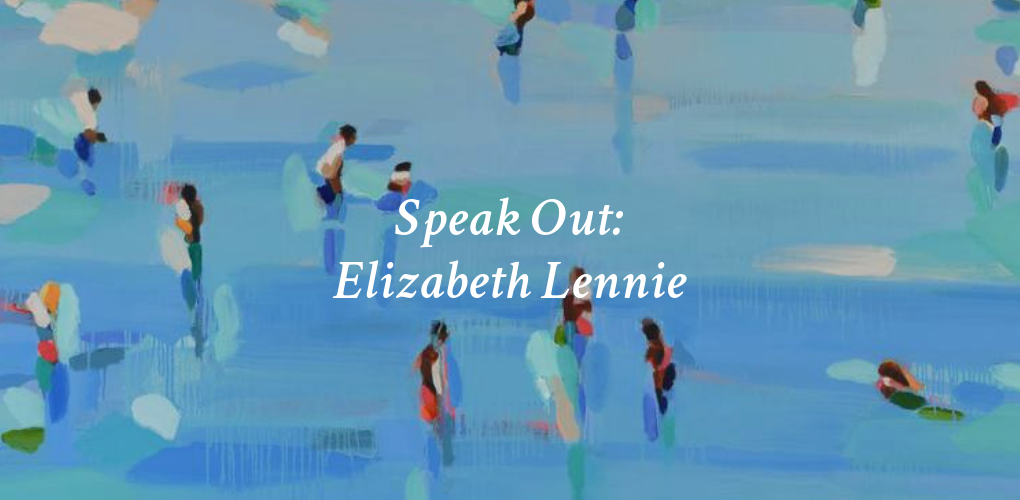Art News
 Speak Out: Elizabeth Lennie
Speak Out: Elizabeth Lennie
“My painting practice gives me a profound sense of autonomy.”
– Elizabeth Lennie
On the occasion of Women’s History Month, Saatchi Art’s curators spoke with artists about their process, inspiration, and the ways in which their identity as a woman is relevant to their art.
Canadian artist Elizabeth Lennie received her degree in Interior Design from Ryerson University in Toronto. Her solo exhibition history includes Muse Gallery in Toronto, and a show this May at Eisenhauer Gallery in Massachusetts. Her works have been acquired worldwide and are held in the permanent collection of the Canadian Hockey Hall of Fame.

What does it mean to you to be a woman in art?
My painting practice gives me profound sense of autonomy, yet in many instances it is the unexpected, or the ‘happy accident’, that gives the work its energy. The excitement is in navigating the balance between control and chaos. As a child, I was given the gift of encouragement to express myself and for that I will always be grateful.
Which female artist inspires you most – past or present – and why?
As a figurative painter who struggles towards abstraction in my practice, I am drawn to the complex work of Cecily Brown. I have recently discovered the beauty of Mary Weatherford paintings, and her unexpected use of neon.
What is your advice to a young woman who aspires to be an artist?
Give yourself permission to be an artist. Because it will pursue you. And then find a group of like-minded people to support, guide and inspire you. Be fearless. When I think of my 15 year-old self I wonder where I would be in my practice had I started then and not in my 40s. I often think of Hamlet “for there is nothing either good or bad but thinking makes it so” as I move through life. I now believe you can do whatever you put your mind to, if your heart is fully invested.
What are the themes you pursue in your work?
I paint liquid landscapes. My subject matter touches on the idea of memory and resilience. It is my hope that the work expresses a reverence for the beauty and fragility of our Blue Planet, through transcendent, human moments within the liquid landscape.
Can you tell us about your process? Do you begin with a sketch, or do you just jump in? How long do you spend on one work? How do you know when it is finished?
I work on several canvases in tandem and use photographs as a starting point. I work fast and sketch with oil paint directly onto the canvas, layering washes, working wet on wet. Many of my pieces have several layers of paintings, one atop the other, as I will abandon them if they are not speaking to me, and start over. Pentimento. Once I lose the rhythm of the process I know I have to start over. Often those are the best! They hold the secret of another story within them. Some paintings will sit for months or years before I am moved to revisit them. Others are complete in a couple of passes. Finishing a painting is like a kind of triage. It’s important to step away before you lose the desire to give it life.
If you couldn’t be an artist, what would you do?
In my next life, and with a bigger brain…theoretical physicist, like Neil deGrasse Tyson! But in this life, a writer.













